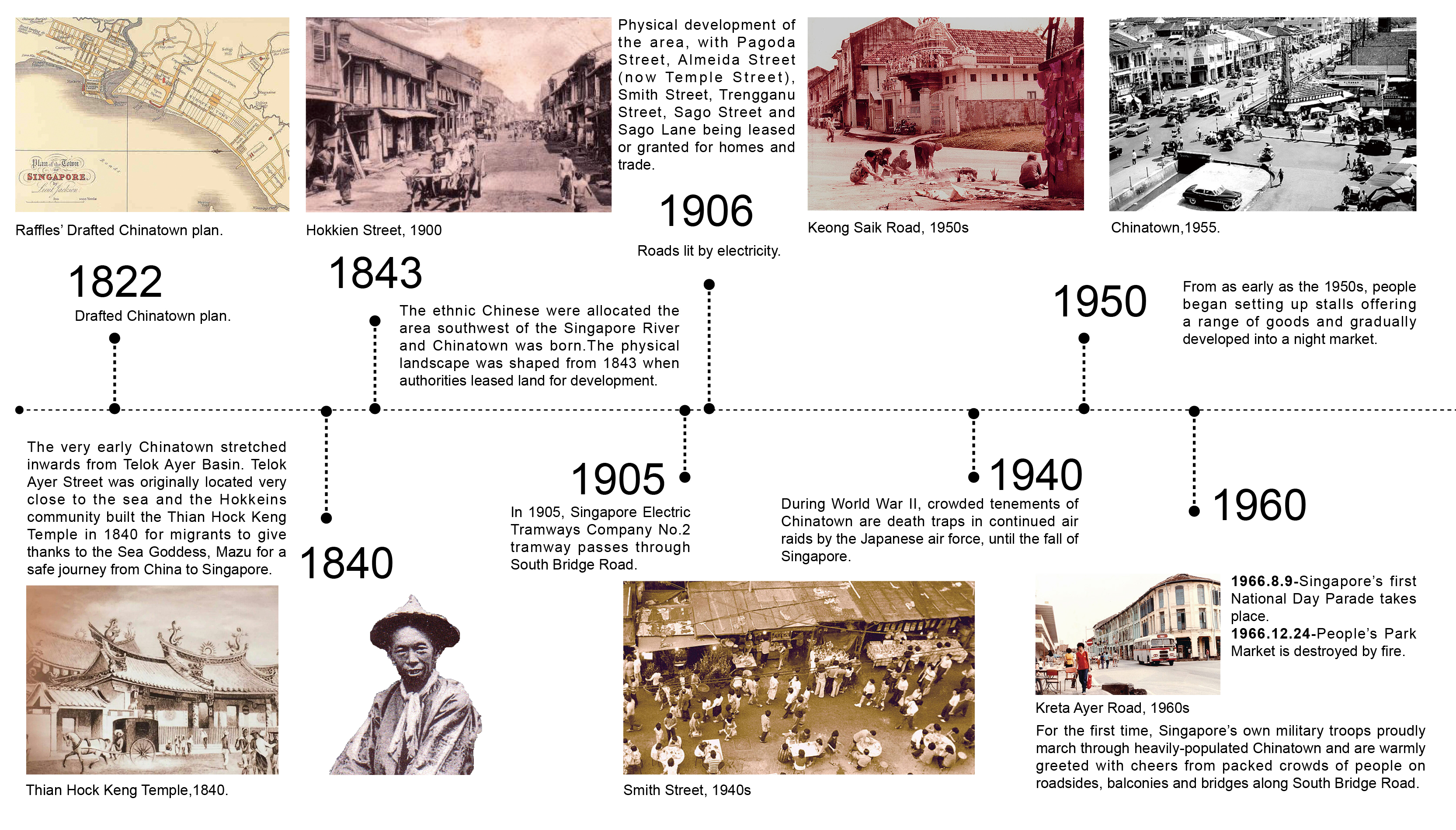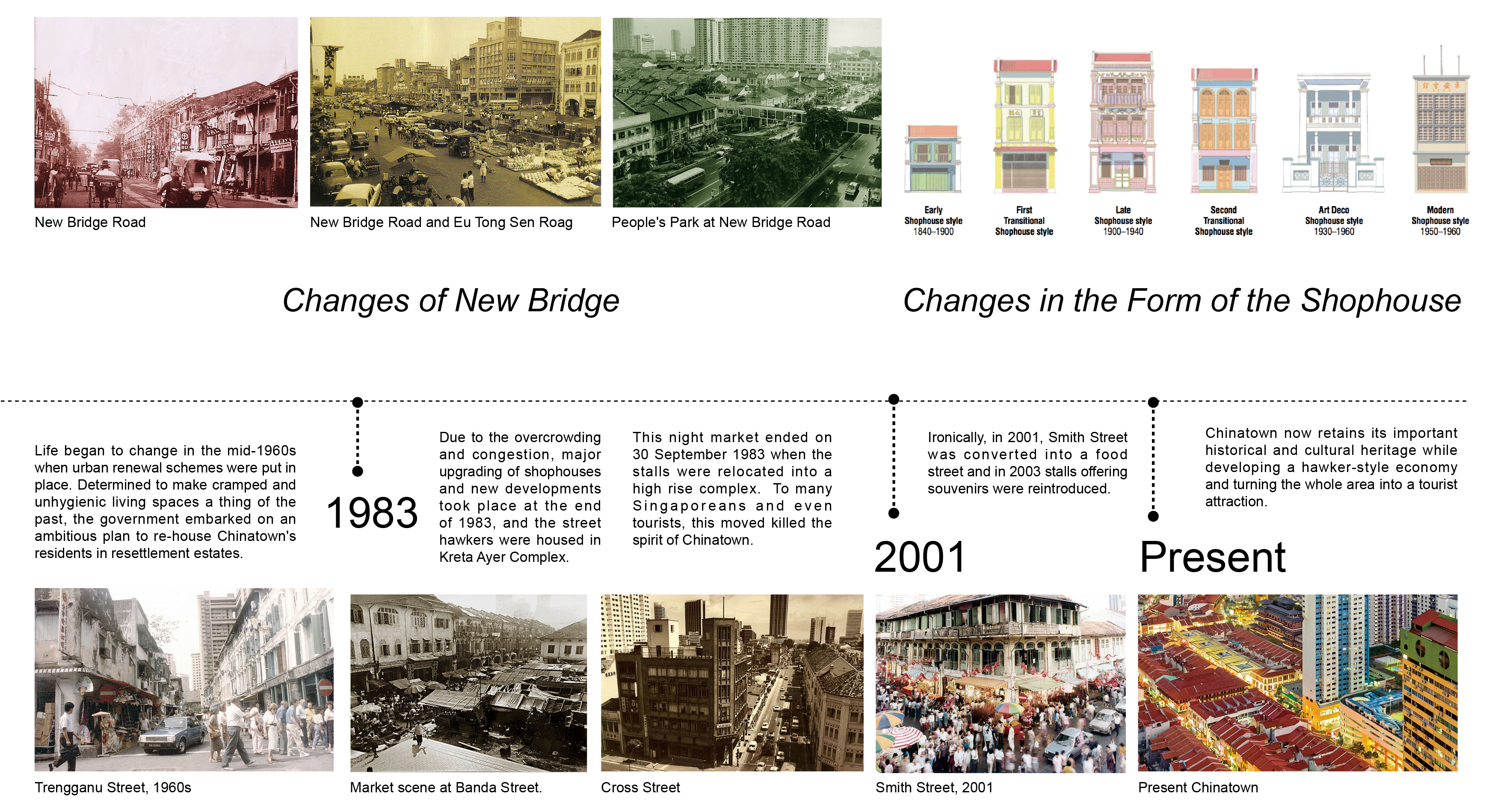Weaving Kreta Ayer
Urban Conservation and Regeneration Strategy
Group 3 - AC5003 AY 2022/2023
Kreta Ayer Urban History
How Kreta Ayer became 'Chinatown'
The Genesis of Kreta Ayer district started the Sir Stamford Raffles commissioned "Lt. Jackson's Plan of Singapore" which was published in 1822. The plan was to gather the initial settlers into ethnic groupings, in which the Chinese were placed south of the Singapore River.
Kreta Ayer and other three sub-districts (Telok Ayer, Bukit Pasoh, and Tanjong Pagar) formed the 'Chinatown' we knew, with Kreta Ayer being the former 'lifeline to the whole area', bringing fresh water through bullocks and oxcart carriers (the literal meaning of the Kreta Ayer or 牛车水) from Ann Siang Hill to the city, and as the commercial center of the city. The area was also famous for its' Cantonese Operas and craftsmen as well.
Fast forward to the Post-Independence Era, the area was rapidly developed to tackle the problem of overpopulation and hygiene that is badly needed. The People's Park Complex built in the 1970s and The Kreta Ayer Complex (along with the theatre) built in the 1980s marked the modernization of the vicinity by resettling the population to these megastructures.
The initial intention of the redevelopment of the area also comes with the intention of bringing tourism in to Singapore. For instance in 1984, the 'Kreta Ayer Complex' was renamed into 'Chinatown Complex' to appeal more to tourists. The area also received conservation status on 7 July 1989. From that point onwards, the gentrification and the rebranding of Kreta Ayer as "Chinatown' shaped the area into the tourist destination that we know of.

